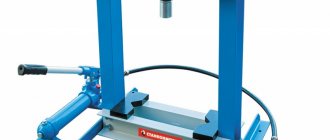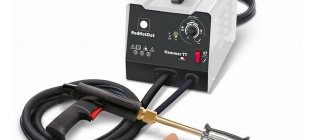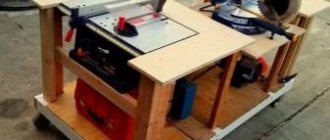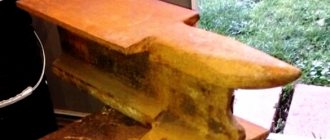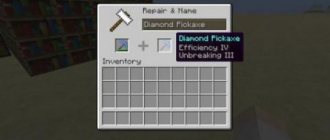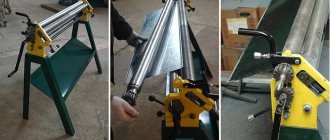Sometimes the need arises to make your own knife. There are different reasons:
- budget savings;
- among the standard samples there is no one you like;
- I want to make my own faithful companion;
- By chance I got an interesting material for preparation;
So we make a decision - we make a knife with our own hands at home.
Stages
As in any business, it is better to start with reconnaissance. Watch a video on the Internet on how to make a knife with your own hands. Read articles and specialized literature, study the opinions of competent specialists.
Then you will decide what kind of knife needs to be made and choose the geometry of the blade. The determining factor here will be the use of the tool - self-defense, economic functions, hunting or an exhibition sample. To put it simply, the determining factors will be whether an injection or a cut will be preferred.
You don’t have to make drawings for making a knife yourself; today there is an extensive database from which you can choose any design you like.
But if you want to do something of your own, then of course you need to put your vision on paper (on the computer). Perhaps the original version will undergo changes.
The easiest way to buy a knife making kit is with a ready-made blade, handle material and fasteners. In this case, manufacturing is reminiscent of assembling a children's construction set, and does not take much time (and the risk of spoiling the product is much less).
Get a strip of good metal - a car spring, an engine valve, a circular saw, a hacksaw blade.
Order blanks for the knife from special resources (damascus, damask steel, powder steels).
If we are talking about a child’s toy or sports equipment, then you should think about how to make a knife out of wood with your own hands. Because it is much simpler and safer.
Moreover, many nations of hunters in the lost corners of the planet still fundamentally do not switch to steel knives, they use stone and wooden ones - they are easy to make and do not mind losing. This process can take up to 30 minutes.
It is important to remember that each material has its own individual properties and what suits someone will not necessarily be a “panacea” in all cases.
General characteristics of a homemade knife
Knowing what kind of steel files are made from, it becomes clear why they are used to make knives. The material used is high-carbon steel of such grades as U10A, Kh12M, ShKh15.
Due to its high carbon content, this material can be hardened to 64-66 Rockwell units. This provides it with sufficient hardness . That is why at home they make a knife from a file.
A high-quality homemade knife can be made from:
- A thick drill for metal. It should be taken into account that the hardened part is only working. The shank is raw.
- Engine piston connecting rod.
- Socket wrench.
- Springs.
- File.
When making fincas on a professional basis, all these things are pre-forged. It is especially convenient to forge a file that has a suitable shape for this. During the forging process, the metal acquires the desired properties and becomes more elastic.
The thickness of the file is such that it requires removal of a layer of metal in order to properly form the bevel. During forging, the metal is not removed, it takes on a different shape. In order to forge a workpiece it will take much less time than when making it on a machine.
Manufacturing
So we transfer the drawing to the workpiece and get started.
We give the general contour to the workpiece - with a circular saw, on a grinding machine or with a regular file.
Do-it-yourself sewing machine repair: rules for operating a sewing machine. Problems with sewing machines and step-by-step instructions on how to fix them yourselfDIY sewing machine: primitive models and tips on how to build a machine (100 photos and videos)
Do-it-yourself grain crusher: types, principles of operation and tips on how and what to make an effective crusher from (85 photos)
We make slopes, stiffening ribs, form the cutting edge - here the work is finer and requires more attention, the grinding tools are of a smaller grain size.
If the workpiece is not hardened, then we can use the method that is available due to the resources used. The most common heating is in a furnace (or gas burner) and quenching in oil.
Next, the handle is mounted, there are many mounting options - bolted, glued, mounted, corded.
Some leave the shank without pads; when throwing, you can break the handle and the balance will change; for climbers, every extra gram is important.
And the most important thing is to sharpen the blade. The question of how to sharpen knives with your own hands gives rise to an abyss of technical solutions: standard grinders and homemade ones with a belt-driven vacuum cleaner engine; devices with fastening of the knife and free movement of the grindstone along it; block with glued fine-grain sandpaper; just sharpening stones and wheels (an ordinary porcelain cup from the same series)
If a sheath is required, it is made to fit the size of the blade. This item is not mandatory, since kitchen knives, for example, do not need a sheath.
Do-it-yourself ski mount: installation and tips on how to install various types of mounts correctly (115 photos and videos)How to make a castle with your own hands: building decorative medieval castles and fortresses (110 photos)
How to make skis with your own hands: choice of materials and technology for making skis at home (105 photos and videos)
Technology and manufacturing stages
At the first stage, the selection of material is carried out. The better it is, the better the quality of the blade. The blade must meet the following requirements :
- be adapted to a specific job;
- withstand shock loads;
- The sharpness of the blade must be maintained for a long time;
- not to be subject to corrosion.
To make a good homemade dagger, you first need to make a design for it. It is better to choose a simple form. Pay attention to the junction of the blade and the handle. There is no need for complications here. It is better to move along a smooth radius.
The DIY process at home consists of several stages. Their order is as follows:
- annealing of the workpiece;
- blade formation;
- hardening;
- vacation;
- making a handle.
Safety
The manufacturing process requires attention and patience, so it is necessary to take all possible safety measures - work in glasses and in specially designated places (pantry, garage, shed), check whether the workpiece is securely fastened, turn off the power tool after performing the operation, where it is possible to work with gloves ( because in some types of work it can be, on the contrary, dangerous - when moving parts of the tool can tighten a fabric element), monitor fire safety.
Photos of knives with your own hands
DIY cockroach trap: options, effective ideas! Operating principle of cockroach traps, types - glue, ultrasonic, electric, electrostatic, poisonousHow to make a furnace for mining: drawings, operating principles and construction of simple and effective furnaces (video + photo)
DIY waste oil burner: types and step-by-step description of how and what to build a burner from (100 photos)
Read here - Do-it-yourself ski mount: installation and tips on how to properly install different types of mounts (115 photos and videos)
Help the site, repost 
0
